2XU Singapore recently collaborated with Coach Andrew Cheong, head coach and founder from SSTAR.Fitness on a running clinic at the Singapore Sports Hub Library on Marathon training and recovery.
Drills And Biomechanics
The workshop began with a 45-minute practical session where the participants did running drills to improve their running biomechanics.
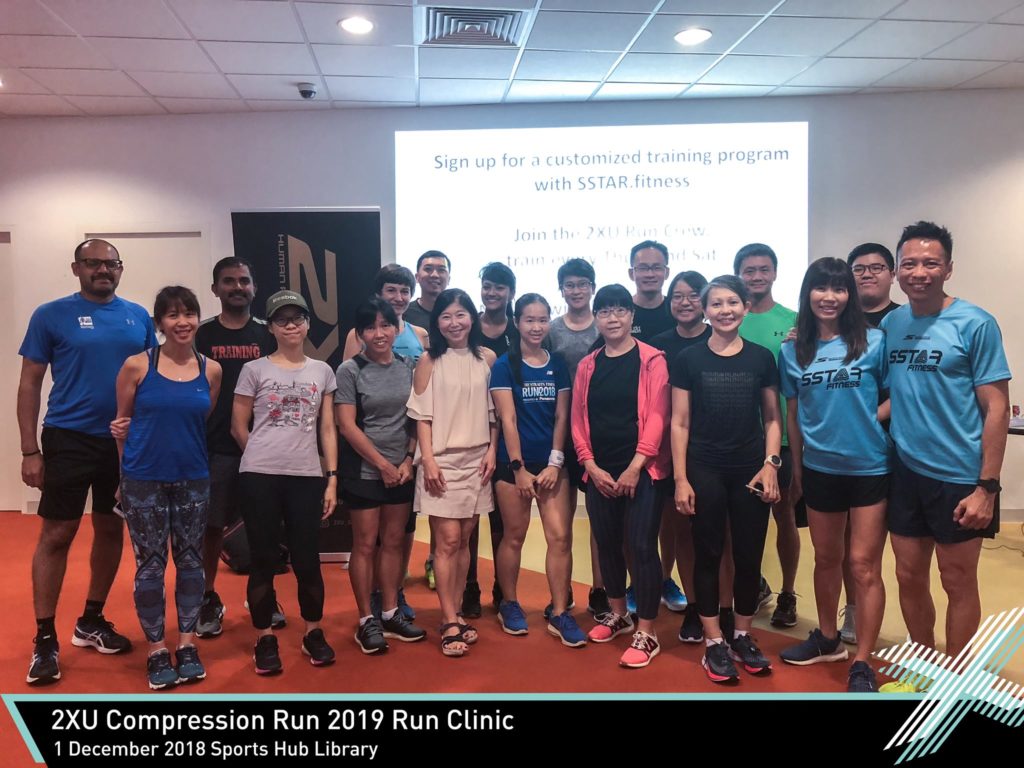
Said Coach Andrew, “Running is one of the most natural things, but as runners, we should also look for ways to reduce our chances of injury.”
The coach then proceeded to bring runners present, through the main foot strike patterns in running – these are the forefoot, mid-foot and heel strike – and shared more about the advantages and disadvantages of each of these.
His conclusion was that to be the most energy efficient runner, using the mid-foot strike is the best, to reduce the risk of injury. Said the coach, “There is no conclusive evidence which type of foot strike is most efficient, but looking at the bio-mechanics of running, the mid-foot strike best to reduces the risk of injury”
He then led the participants outdoors for the drills, which were broken down into several parts, focusing on posture, leaning forward from the ankles, ankle lifts, mid-foot landing, running cadence and arm swings.
The drills posed to be more challenging than I had originally thought, and as a result, there had been times when Coach Andrew corrected my form. He went around helping others as well.
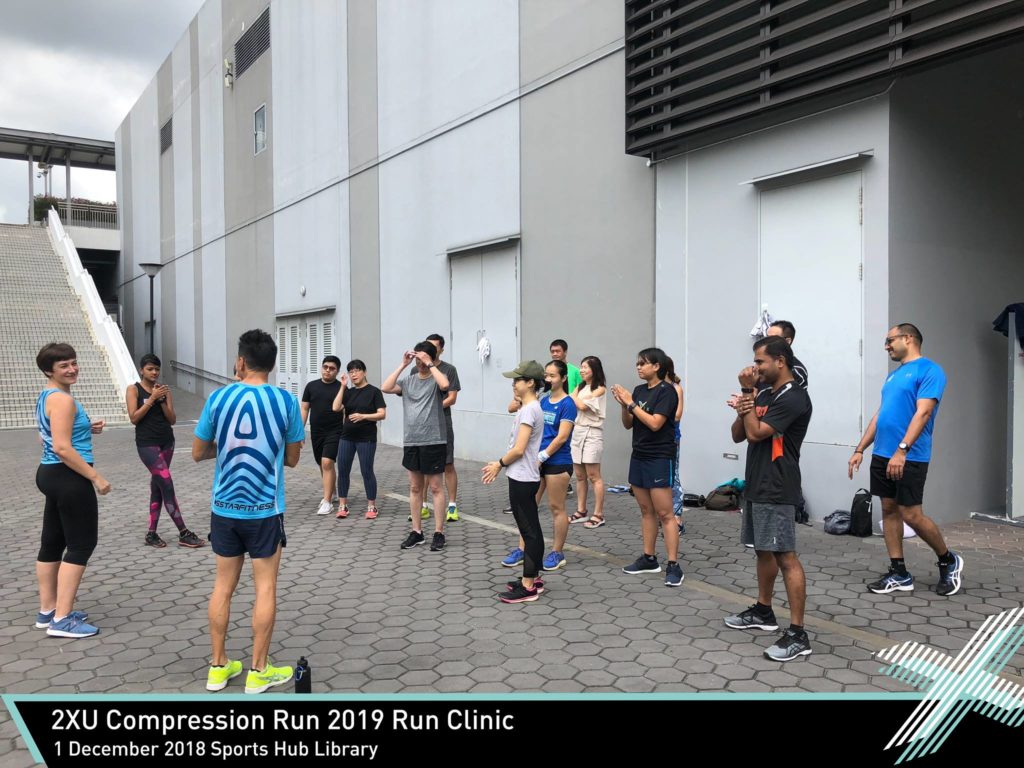
After the conclusion of the drills, the runners headed back into the Sports Hub Library where the coach shared more about training and recovering from a Marathon.
Prioritise Your Races
For Marathon runners, Coach Andrew stressed that it is important to prioritise your running races, and decide which should be the ‘A’ races, that is, your key races and you then train specifically for those ones. The rest of the races should then form part of the training plan to build up to the ‘A’ races.
Said the coach, “Most elite Marathon runners focus on 1 to 2 races a year and use the rest to test out their fitness and progress.”
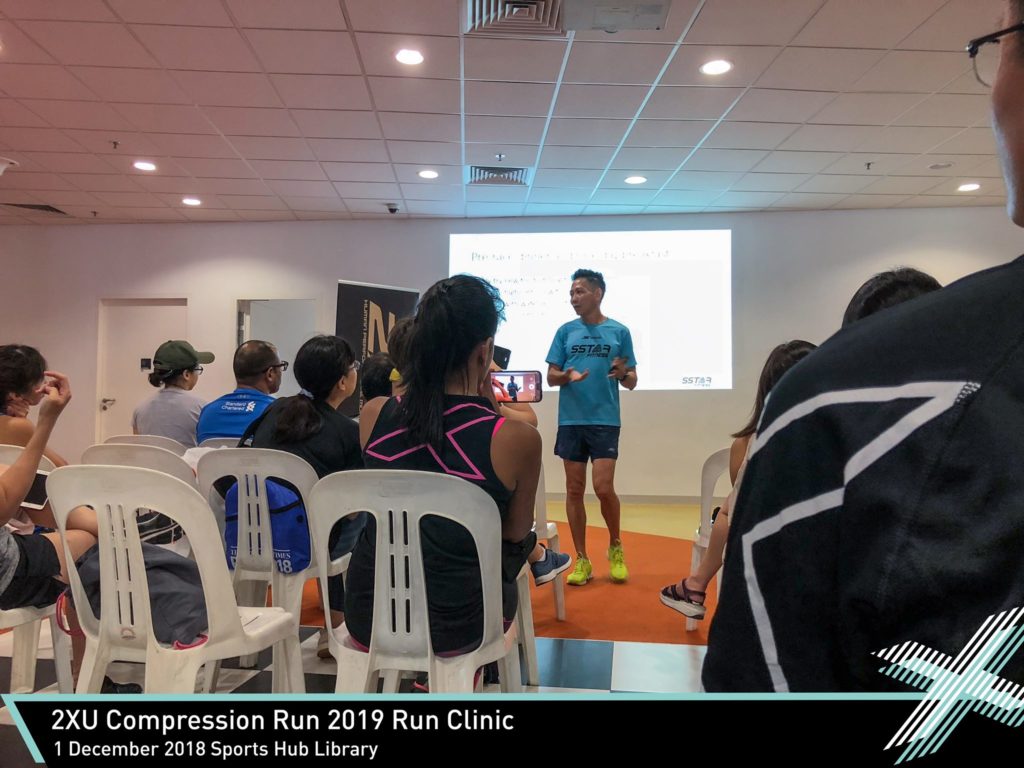
When To Resume Training
He said, “For an A race, if you went all out and got cramps, there will be more tissue damage, so recovery will take longer. You should give yourself 2 – 3 weeks before you go back to serious training.”
Coach Andrew stressed that even though you should not train, he promotes active recovery via walking; doing so immediately after the Marathon will also help to minimise DOMS (Delayed Onset Muscle Soreness) that tends to come about the day after a hard Marathon.
However if the race was a slow and easy race, the coach adds that you can get back to a training regime a lot sooner.
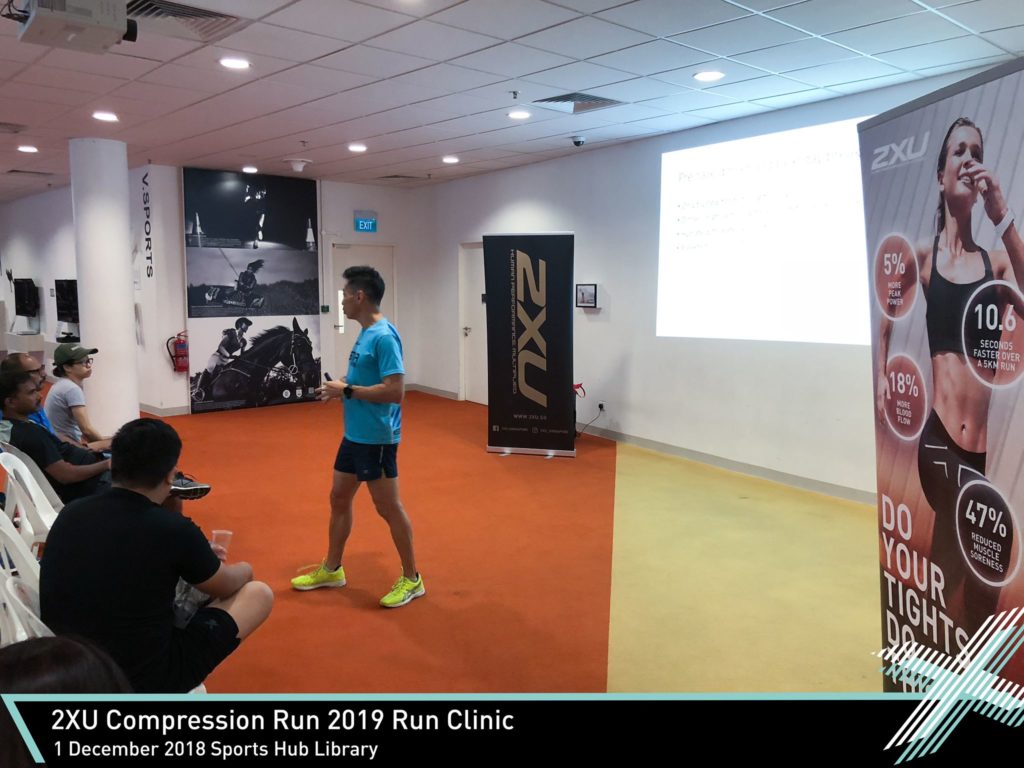
He said, “I did an Ironman in Taiwan recently and I was super slow, so my legs were fine the next day; in fact I was up and about the next day, doing some shopping.”
Rest And Recovery
In most cases, you can probably wait for a few days before returning to a training regime, beginning with light jogging.
Besides that though, Coach Andrew added that using compression wear can help the body to recover post-race, because this helps to improve blood circulation from the lower limbs back to the body.
Ice baths may also help, because according to the coach, these channel the flow of blood away from the core of the body and into the organs. The most effective temperature for an ice bath is about four to five degrees C – any colder and the ice bath loses its effectiveness as most people cannot stay long enough in very cold water.
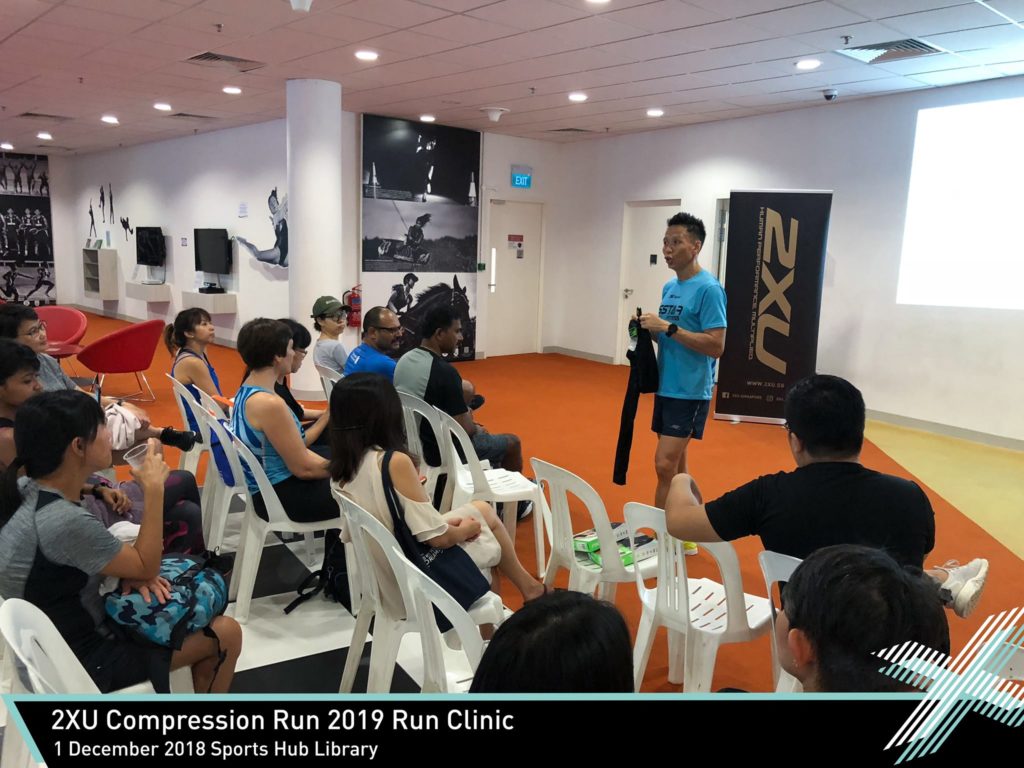
As well, making sure that you do a proper cool-down routine no matter how tired you are, instead of simply plonking yourself on the floor after the Marathon, will also aid with a faster recovery post-race.
Training For Marathon
And with regards to training for a Marathon, Coach Andrew explained that your training sessions should be treated as dress rehearsals for Race Day, where you practise using your gear and hydration strategies, to determine what works and what doesn’t.
The final three days before a Marathon are especially important, added Coach Andrew, because this is when you need to make sure that you get adequate sleep and nutrition for the race.
You should not be trying out new foods during this period, but instead consume only what your body is accustomed to.

This applies to overseas races too; instead of pigging out on new foods at the destination, you should try and find out what are the common foods available in advance, and try and get used to these foods during your training runs, prior to your trip.
Carbo Loading
And Coach Andrew explained that carbo loading, where runners increase their carbohydrate intake days before the race, is only useful for races that last more than two hours, so this means you don’t need to do this for a 10km race, or even a Half Marathon if you can run that distance in less than two hours.
However he pointed out that carbo loading is not simply about pigging out on carbs; in order for it to work, there is a strategy. You will need to cut down on all carbs one week before the race in order to deplete the body’s carbohydrate stores, and then after that, three days prior to the race, you then increase your intake of carbohydrates, in order to overload the ‘tank’ thus increasing your glycogen stores.
But how much should you eat? According to Coach Andrew, you need to be consuming 7-10g of carbs/every kilogram of body weight three days before the race.
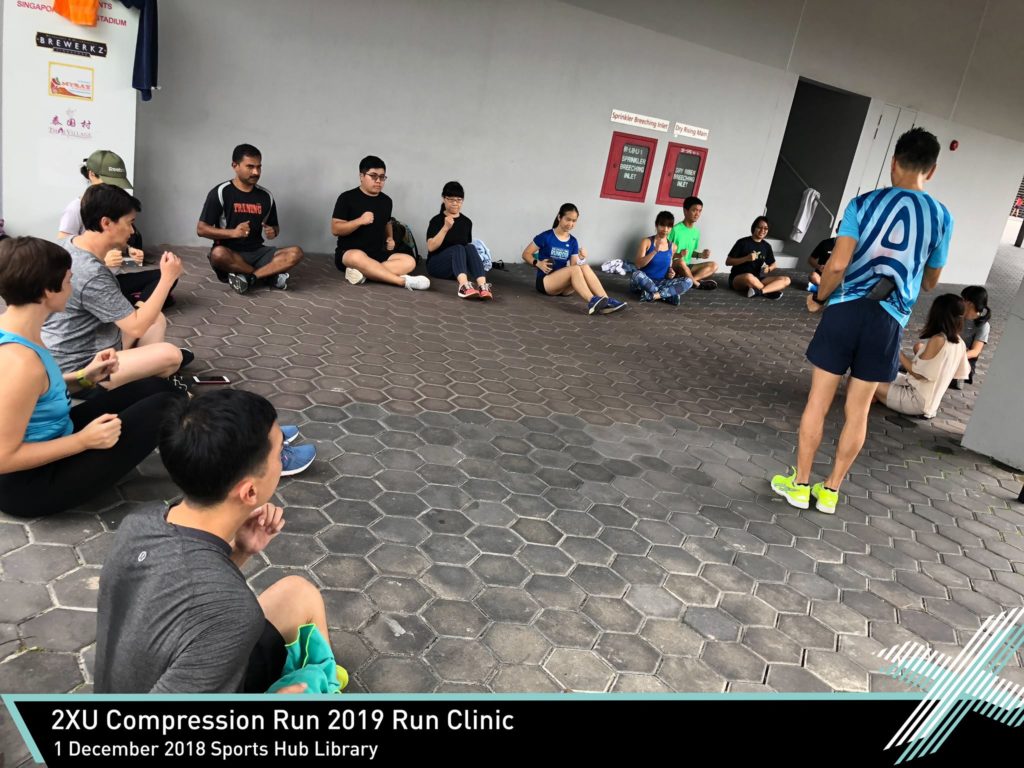
However you also need to be careful of weight gain, as you will be reducing your exercise levels, too. Gaining about 2 – 3 kilograms during this carbo loading period not normal, so if you put on anything more than that, you have probably been overdoing it.
Sleep Habits
For sleeping habits, the coach stressed that you need to get a good sleep 3 – 4 days before the Marathon. The fact that you did this, may actually help you relax and sleep better before race day.
If you are not able to sleep well the night before the race, that is not an issue if you already had a few nights of quality sleep. So for instance, if the Marathon is on Sunday, then you need to have had a good sleep from Wednesday – Saturday night.
Weather And Climate
And you will also need to gear up for the weather, if it is not what you are accustomed to, according to Coach Andrew.
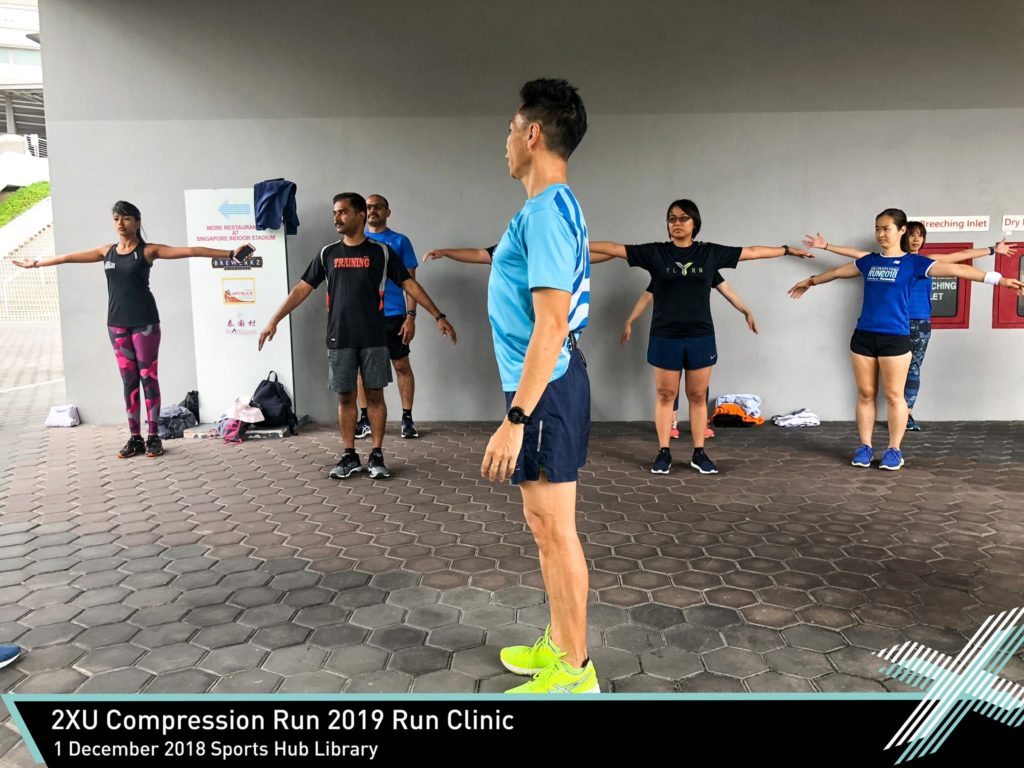
For example, if the Marathon is run in a tropical climate like that in Singapore and Malaysia, you need to employ measures to cool yourself down.
Said the coach, “A lot of times, people pour water over themselves to stay cool but if the humidity is above 80%, there isn’t much evaporation off the skin, so the most effective thing is actually to eat ice instead, if you can get some and it’s hygienic to do so. Eating ice means that the ice will go straight into your core and lower your body temperature, more so than water.”
He also added that you should wipe away any sweat that accumulates, too, especially in Marathon races with high humidity because this increases the rate of evaporation, thus cooling you down, too.
Sunscreen is important, too, for tropical Marathon races, as you will most certainly face the onslaught of the sun in the middle of your run… if you do not run as fast as the Kenyans do.
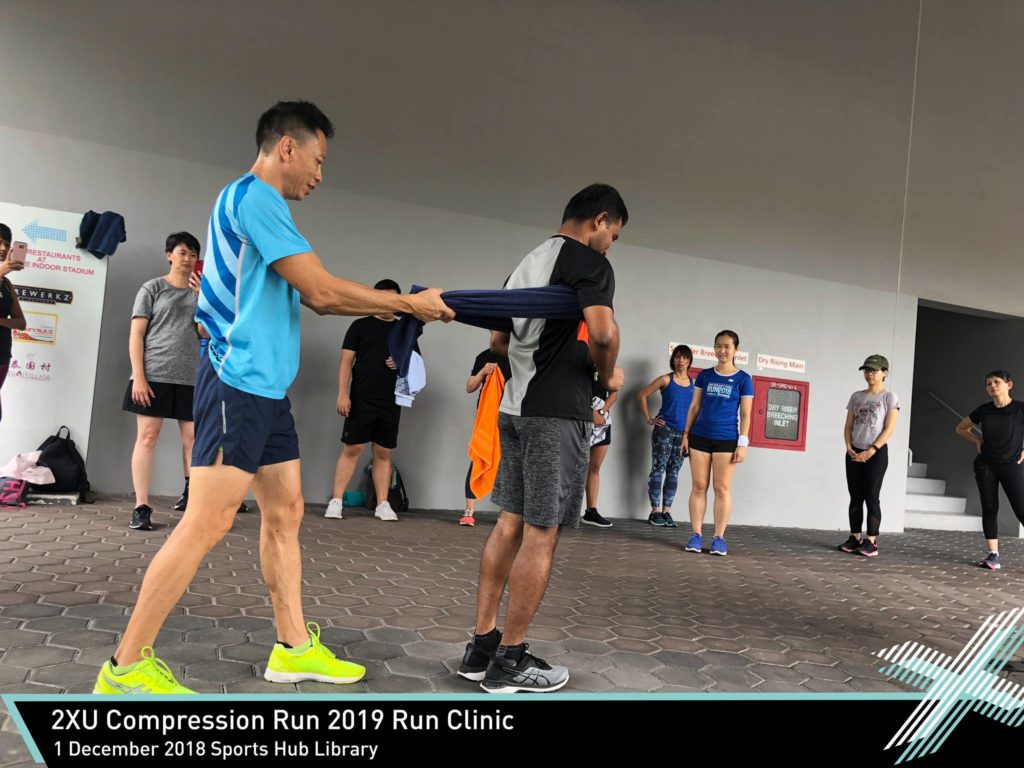
On the other hand, for temperate weather races, Coach Andrew stressed that the air in these climates is drier and you may not feel as dehydrated, but you will still need to drink. However he adds that you must drink to thirst, and consume both water and isotonic beverages, but not over-drink.
As well, layering up is important, too for winter races, but Coach Andrew stressed that you should not overdo the layers, as you will heat up as you are running. As a result, what felt right at the start line, may feel too hot halfway during the race.
He suggests wearing three light layers rather than two thick sweaters, as this will be more effective, as you’ll be able to strip the layers off and adjust your insulation needs more easily when you begin to feel warm.
Race Morning
On the morning of the Marathon, your breakfast should consist of a mixture of low, medium and high Glycemic Index (GI) foods, in order to provide you with energy both at the beginning as well as in the later stages of the Marathon.
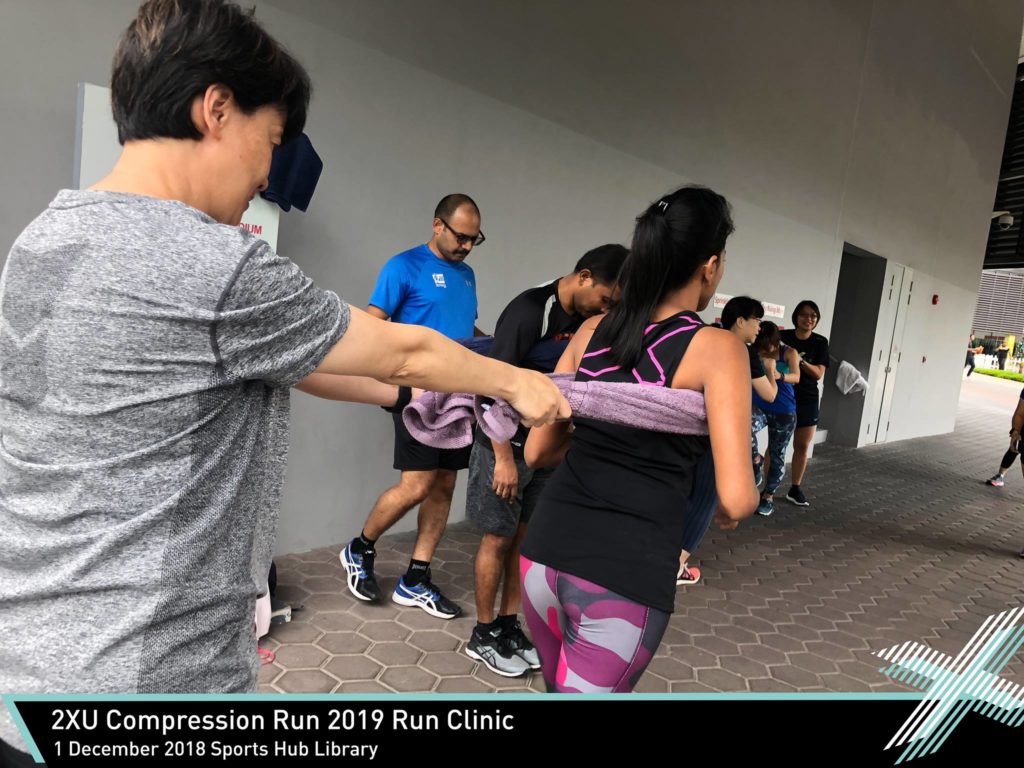
The GI ranks carbohydrates according to their effect on blood glucose levels, with lower GI foods resulting in a slower rise in the body’s blood glucose levels.
Energy at the start of the race, that’s during the first few kilometres, will come from the high GI foods, while the energy for the latter part of the race comes from the low GI foods.
In line with his own advice, Coach Andrew himself would typically consume a banana, whole meal bread and isotonic drink on race morning.
Get There Early
The coach stresses that it is important that you need to get to the race early, because more often than not, there will be numerous road closures. As well, if you need to use the bathroom, you may need to prepare a long time to wait in line.
Said the coach, “I almost missed a race once, that was at Gold Coast 2010. Two minutes to go before my flag-off, I was still queuing, but it was urgent! So I ended up sprinting straight out of the loo to the start line; it was non-stop running all the way.”
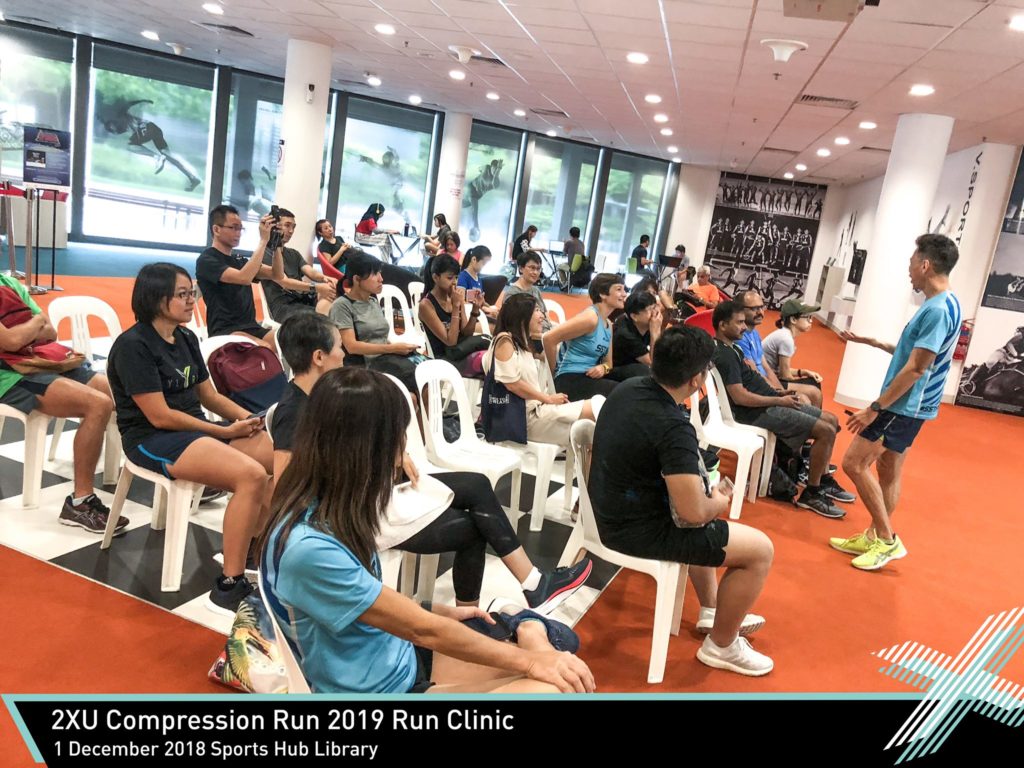
He continued, “Don’t do what I did. My heart rate was already skyrocketing before I started the Marathon!”
Pacing
The coach stressed too, that pacing is important and that you should never start out too fast. For instance, studies have shown for every one minute too quick that a runner goes in the first half, it could result in a slow down of four to five minutes in the second half.
If in doubt, Coach Andrew says that you should hold back and start pushing at about 30km – 35km and if you are still feeling good, you give it your all only after that.
Race Hydration
For race hydration, Coach Andrew suggests that the standard formula of taking one gel every 10km may be easy to remember, but it may not be what every runner needs.
Rather, he indicated that it is better to follow your own rules – a heavier person may require more gels but a lighter person might not need as much.
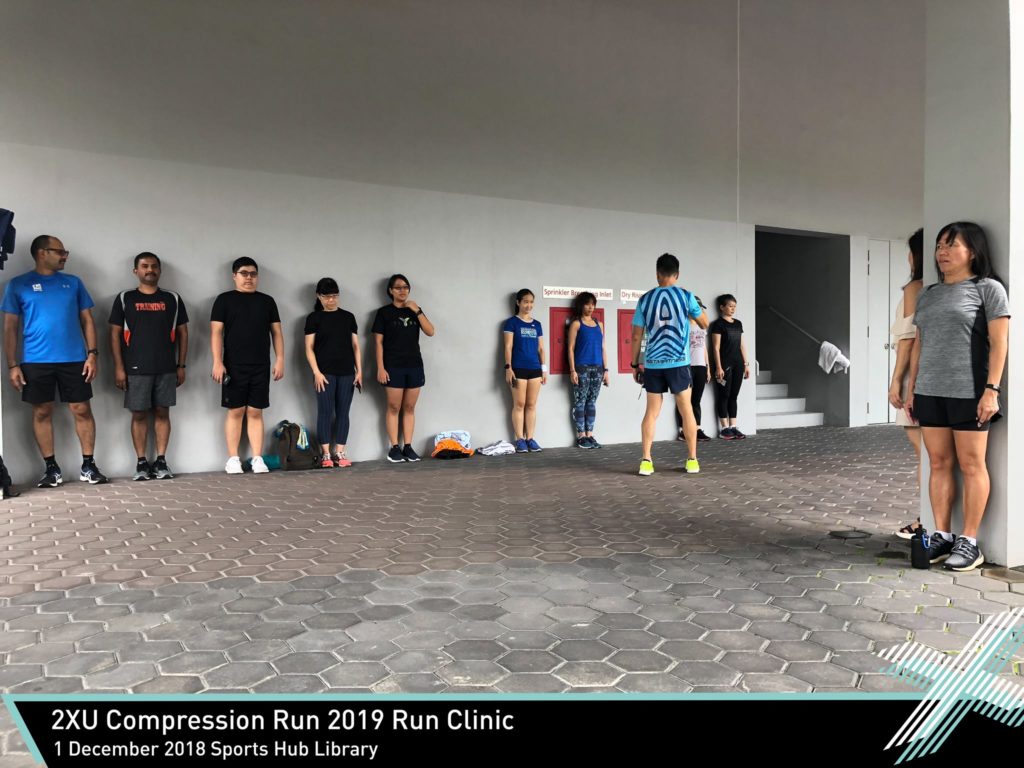
And when you are taking gels, it is best to wash them down with water, rather than isotonic drinks.
But otherwise, he stressed that you should drink both water and isotonic, not purely water, during your run. This is because you will need to replenish the salts and electrolytes that you have lost through your sweat, and not just the fluids.
He also added that you should to drink to the point of thirst, and drink often, in small amounts, rather than gulping down multiple cups of water at the aid station.
A Marathon Is Mental
Finally Coach Andrew mentioned that some people say Marathon is 50 – 80 per cent mental, so even though physical training helps, you need to prepare your mind too, in order to keep going in the latter stages when your body begins to feel tired and the pain sets in.
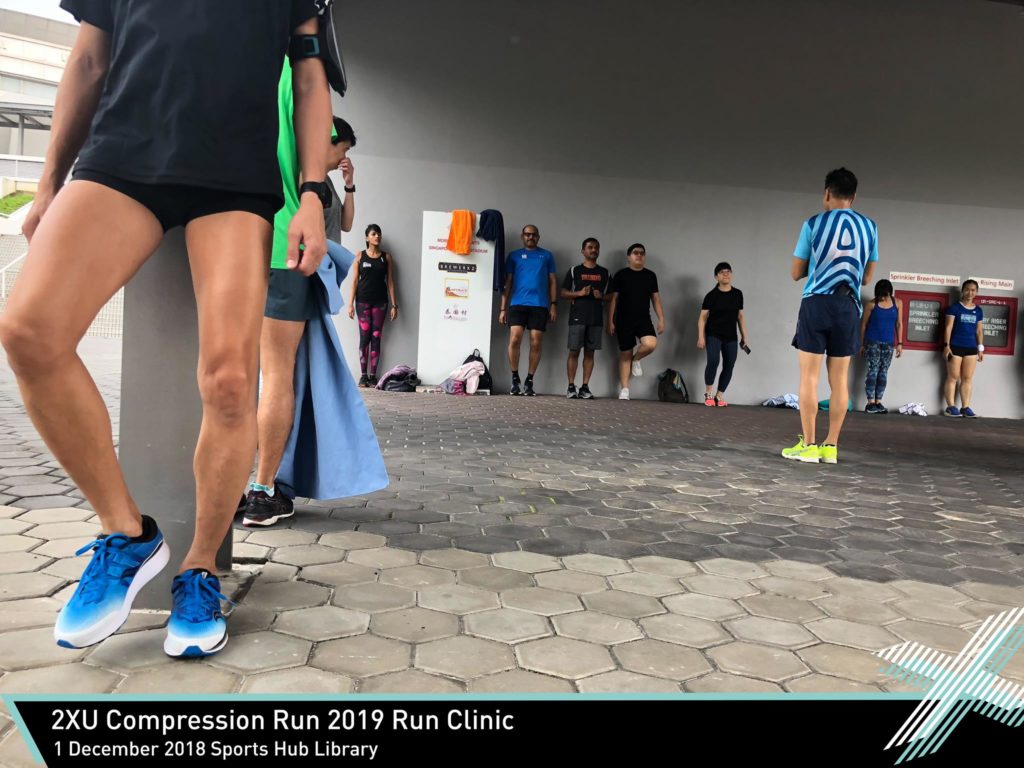
The three types of mental strategies that can be used for a Marathon are association, disassociation and imagery.
Association is when you focus inwards, for example, checking whether your running form and gait is good, mentally focusing on different body parts, doing a mental ‘status check’.
Disassociation is just the opposite – it’s about distracting yourself by focusing on outside factors such as the scenery, giving high fives to spectators or looking out for runners in costume.
Imagery is when you recall ‘images’ and positive feelings that you have experienced in training and self-talking to encourage yourself during the race.
For example, there could be a long run that you did which went very well, you felt strong all throughout, the weather was great, you saw an amazing sunrise. Try to remember the images, the positive feelings of strength and ‘playback’ in your mind during the race.
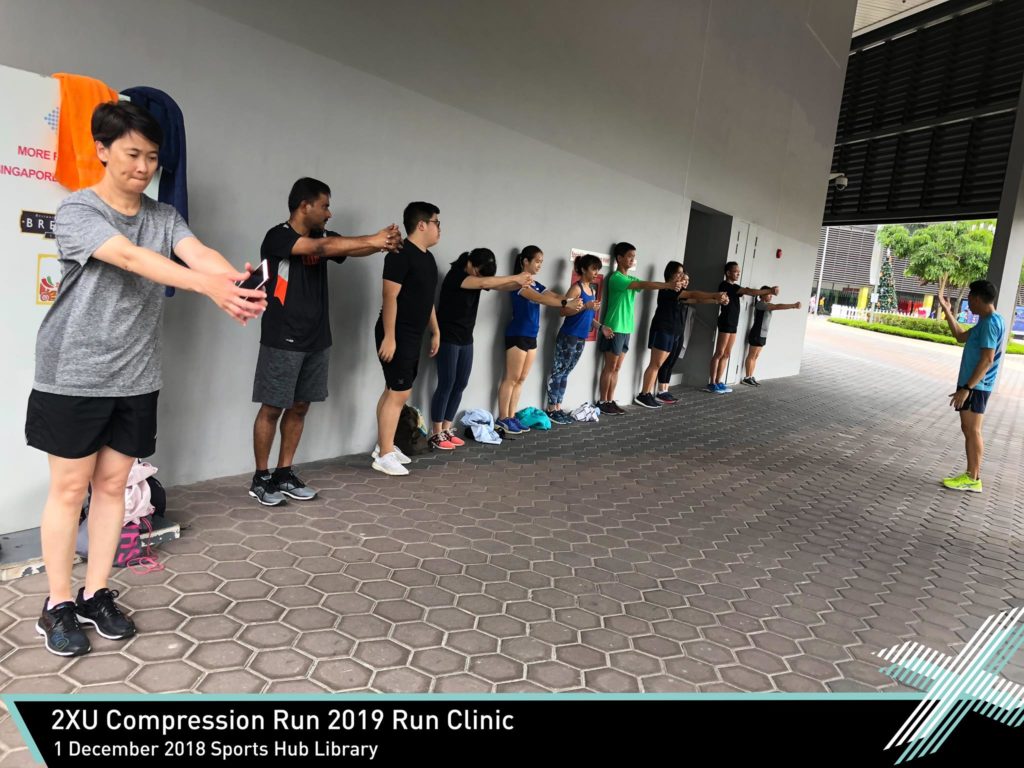
Replenish With Food And Drink
And the minute that you are done with the race, Coach Andrew stressed that you need to get in some food and drink, preferably something with 10 per cent protein as well as lots of carbs.
He recommends chocolate milk if you are not lactose intolerant. Other alternatives also include energy bars and soya milk.
Session Ends
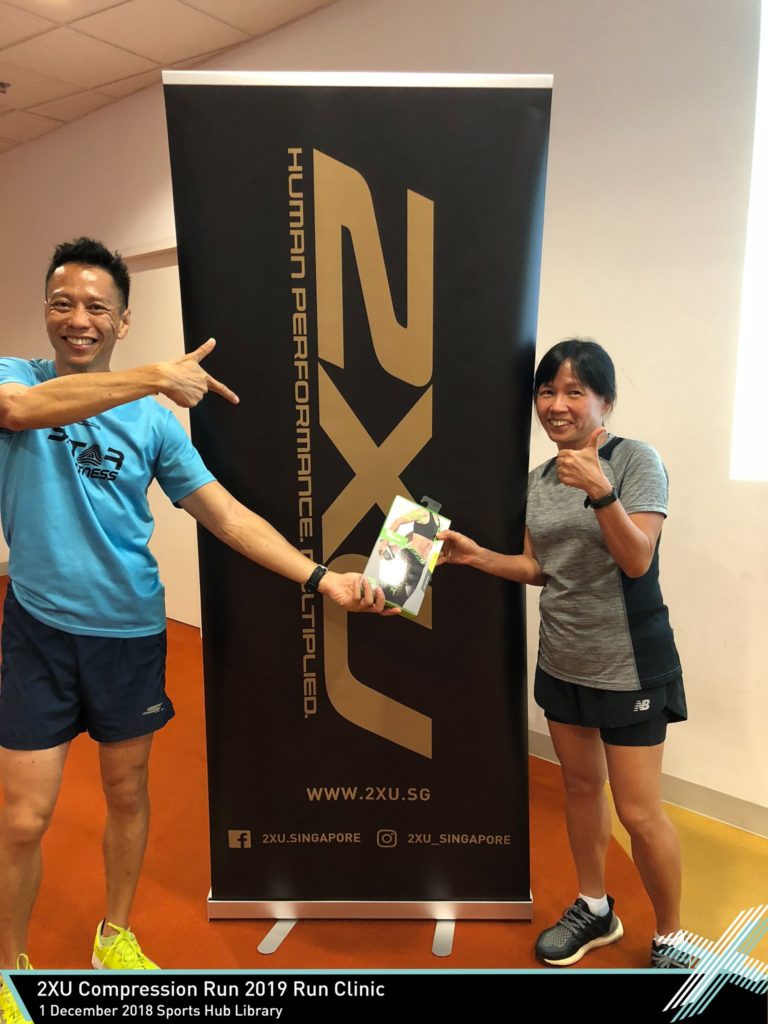
The session ended with attendees asking the coach questions to clarify any doubts that they may have had about running and then there was a lucky draw where there were three pairs of compression tights sponsored by 2XU given out.
After that, we had a quick group photo taken, in order to preserve the memories of the session.
All photos are from Facebook/2XU Compression Run 2019.

Leave a Comment